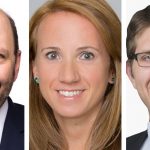In February, the National Association of Independent Colleges and Universities (NAICU) posthumously awarded its 2022 Advocacy Award for Independent Higher Education to Lois Dickson Rice, the “mother of the Pell Grant,” for her work on education policy. To date, more than 80 million students have benefited from the Pell Grant.
According to Clay Pell IV, without Rice, the Pell Grant “would not have come into existence.” The grants have been associated with Pell’s grandfather, Senator Claiborne Pell of Rhode Island, since 1972, when the late lawmaker was the main sponsor of the legislation that created the Basic Educational Opportunity Grant Program.
To highlight the senator’s role in the federal subsidy, the name of the program was changed in 1980.
But Rice, an education policy expert, worked closely with Pell to bring the grant to fruition.
“It’s difficult to overstate how impactful her work was,” said Katharine Meyer, a fellow in the governance studies program for the Brown Center on Education Policy at the Brookings Institution, where Rice was a guest scholar. “She really advocated based on her understanding of the research and on her understanding of the lived experiences of low-income students that some sort of federal investment in grant-based aid was going to be necessary to ensure that students who wanted to pursue higher education wouldn’t be barred from doing so.”
Nearly all Pell Grant recipients come from households with annual incomes of less than $60,000. The program, rather than providing loans to low-income students that would need to be repaid, grants financial awards that today go up to $6,895 per school year.
However, the Pell Grant money doesn’t go as far as it once did. Thanks to tuition increases, the grant that once covered about 80% of college expenses now only covers about 30%.
But Wil Del Pilar, Vice President of Higher Education Policy and Practice for The Education Trust, thinks this needs to change. “We, among a lot of other folks, have been pushing for doubling Pell,” he said. “But we have to double Pell along with holding states accountable for investing in higher education. One of the reasons that the cost of college has increased so much . . . is that states have started investing less in institutions of higher education, leading to more of the burden being placed on students and families.”






















